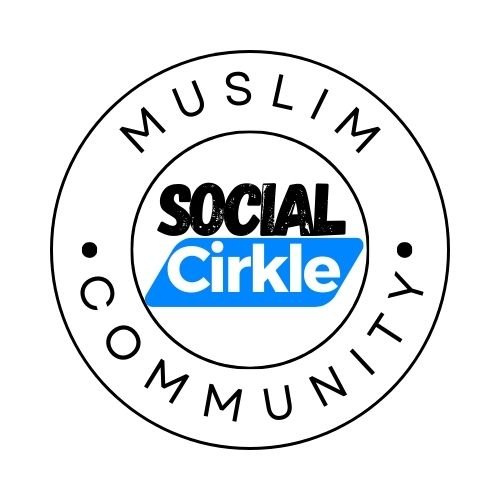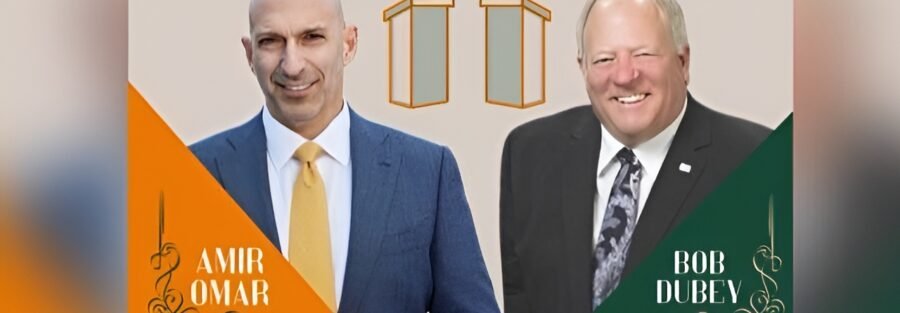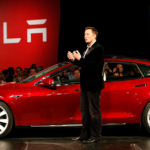On April 2nd, 2025, the University of Texas at Dallas became the stage for a debate between Amir Omar and the incumbent mayor, Bob Dubey, ahead of the upcoming mayoral elections. Moderated by John Gooch, the debate revolved around three critical questions:
- Richardson’s financial stability.
- Economic development.
- Affordable Housing.
Image: Richardson Mayoral Debate at UT Dallas
The format allowed each candidate a minute to respond to the moderator’s questions, followed by a seven-minute discussion. The uncontroversial topic of “taxes” set the tone, eliciting a chuckle from the audience, but the discourse that followed was anything but lighthearted.
Financial Stability: “Ahead of the Curve” Vs “Let’s Not Paint an Overly Rosy Picture.”
John Gooch opened the debate with the first question: “Richardson has historically maintained a balance between commercial and residential tax contributors, but recent changing market conditions are slowly putting pressure on that model. How will each of the candidates ensure Richardson’s financial stability while balancing tax rates and essential services?”
Mayor Dubey painted an optimistic picture, emphasizing the city’s adherence to a 60-40 tax ratio between corporate and residential contributors. “In 2024, we had $250 million worth of capital investments back into the city,” Dubey said about following conservative budgeting practices. He highlighted Richardson’s AAA bond rating, achieved for 15 consecutive years, and its recognition as a “transparency trailblazer,” one of only 20 cities in Texas to receive this accolade. “We are ahead of the curve,” Dubey declared, projecting confidence in the city’s fiscal health.
Amir Omar, however, struck a contrasting tone. “As mayor, it is going to be important to speak the truth and be forthright to our residents,” he began, cautioning against presenting an overly rosy picture. Omar pointed to a troubling trend: the commercial tax contribution had dipped from 60% to 58% in recent years.
“This is a concern,” he emphasized, calling for transparency as a foundation for trust and leadership. Omar’s business and technology background informed his proactive approach. These are three things he wants to utilize his business background to accomplish:
- Engage personally with employers to understand their growth strategies.
- Retain businesses within Richardson, preventing relocation to neighboring cities.
- Address the exodus of companies like Asa Abloy to Plano as part of his economic development priorities. He asserted, with confidence in his ability to converse with companies in their language:
“As mayor, I would get to know these employers personally and their growth strategy.”
Amir Omar at UT Dallas for the Mayoral Debate
The ensuing discussion revealed stark differences in their strategies.
- Dubey touted his experience with large-scale projects and initiatives like the economic development lunch, where he and the city manager met with corporate presidents. “We took economic development out of the chamber of commerce’s hands so we could work directly with these companies,” Dubey explained, citing the approval of three major projects involving the redevelopment of old office buildings into housing.
- Omar, however, criticized such efforts as ceremonial. “There is a difference between going and meeting these employers one-on-one versus waiting for everyone to come to me for lunch,” he countered, advocating for a more hands-on approach to economic retention.
Economic Development: “Prioritize Developers’ Needs” Vs “Sticking to Plans”
John Gooch posed the second question: “The city of Richardson faces opportunities and challenges in economic development. If elected, what specific policies or initiatives would you implement to ensure Richardson remains an attractive destination for businesses while also adapting to changing economic conditions?”
Omar’s stance was prioritizing existing businesses and adhering to established plans. He cited a case where a car dealership’s proposal conflicted with the city’s Inner Urban plan, arguing that constant plan changes eroded trust and investment. “We have already invested in your plan as a city, and now you’re going backward on it,” he foreshadowed the companies’ response to constant change, stating that this trend will drive businesses away from Richardson.
Dubey countered by highlighting the city’s comprehensive planning process, which included extensive community input through town halls. “We had several meetings to expand the input,” he noted, acknowledging the need to update the city’s outdated comprehensive plan, last revised in 2009. Dubey defended the council’s efforts to balance development with community interests, stating, “Proud of the work that the council has done.”
An analysis of the discussion presents a philosophical divide:
- Omar championed adaptability and proactive leadership.
- Dubey leaned on institutional processes and past achievements.
“Residents didn’t feel like they were being listened to anymore,” Omar criticized Dubey for focusing on the suggestions and demands of the developers and ignoring the demands and needs of the citizens.
Amir Omar at the Podium in UT Dallas Student Service Auditorium for the Richardson Mayoral Debate
Affordable Housing: “More Units” Vs “Addressing Student Crisis”
The final question, posed by John Gooch, tackled the pressing issue of affordable housing: “With housing costs rising across North Texas, how should Richardson address the need for affordable housing while also maintaining the quality and character of existing neighborhoods?”
Dubey acknowledged the scarcity of green space for new neighborhoods and the need for diverse housing options. “We’ve asked on multiple occasions the developers to include different sizes of square footage in each of these developments,” he explained, expressing concern about housing prices and emphasizing efforts to accommodate people from all walks of life.
Omar, however, took a more critical stance. “We are doing our best to make housing that makes more sense to Richardson’s residents and also helps our students have more housing options,” he stated. Omar argued that adding apartments alone would not solve affordability issues, given regional economic pressures. He advocated for creative solutions and partnerships, such as working with HUD, to address housing needs.
“You can’t talk about houses without talking about the housing crisis for the students,” he emphasized, criticizing Dubey for voting against housing opportunities repeatedly. It is important to know that Omar has been actively engaging with young residents and students regarding concerns about housing and transportation. He recently held a discussion with Richardson youth regarding the student housing crisis at UT.
The discussion is essential evidence of the problem-solving approaches of the two candidates. Omar criticized Dubey’s perceived passivity, contrasting it with his proactive leadership style. “There are ways you can creatively do that. There are ways you can proactively work with these people,” he asserted, saying that the mayoral role is an opportunity to drive transformative change.
“The best way to become greater is to have a mayor who knows how to make that happen.”
Omar with his Team at UT Dallas for Richardson’s Leadership Debate
Conclusion: Will Dubey’s Flexibility or Omar’s Strategy Shape Richardson’s Future?
The UTD debate is so far the most recent and articulate means of measuring the difference between Amir Omar and Mayor Bob Dubey. Dubey’s narrative of stability and institutional pride differs from Omar’s call for transparency, adaptability, and proactive leadership. Multiple times during the debate, Omar used the term “proactive.” His campaign revolves around that foundational skill. On the other hand, Dubey seemed convinced that Richardson did not require much change, as he stated, “Amazing things are happening.”
To listen to the full debate, visit: Historic Mayoral Debate at UTD





